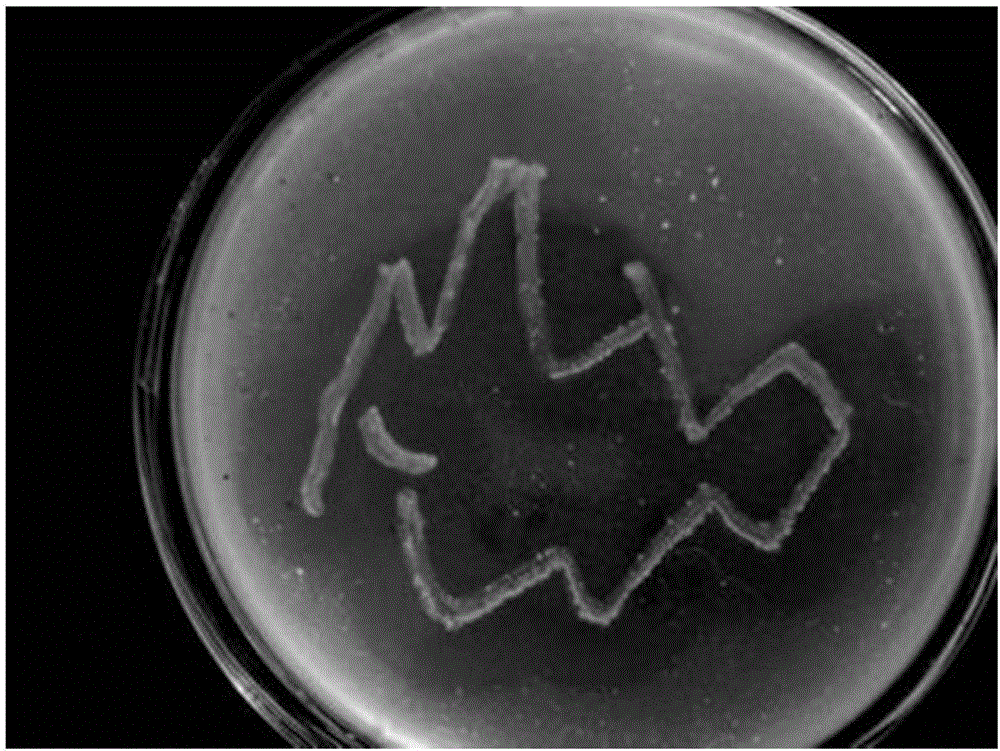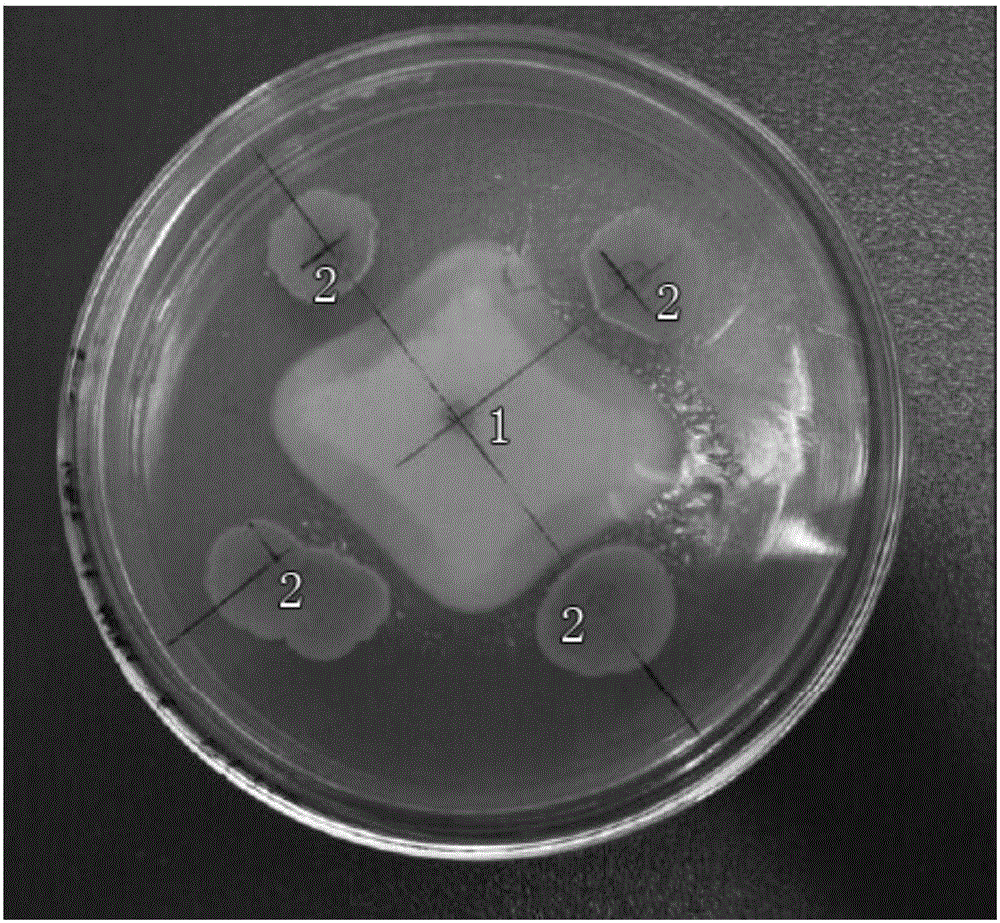Bacterial strain for preventing and treating soil-borne fungal diseases of peanuts in continuous cropping and applications of bacterial strain
A soil-borne fungus and disease technology, applied in application, microorganism-based methods, chemicals for biological control, etc., can solve the problems of unstable field control effect, high application cost, large dosage, etc., and achieve significant yield increase effect. , low cost, and the effect of reducing the number of pathogenic bacteria
- Summary
- Abstract
- Description
- Claims
- Application Information
AI Technical Summary
Problems solved by technology
Method used
Image
Examples
Embodiment 1
[0033] The peanut rhizosphere soil of a piece of continuous cropping peanut field in the red soil area was collected for related experiments, and the specific steps were as follows:
[0034] (1) Soil sample treatment: prepare sterilized enrichment medium (ingredients: 2.5g of fine powder chitin, MgSO 4 ·7H 2 O 0.5g, K 2 HPO 4 0.7g, KH 2 PO 4 0.3g, FeSO 4 ·7H 2 (0.01g, distilled water 1000ml), sub-pack 20ml in a sterile Erlenmeyer flask, and get 1.0g of fresh soil sample into the Erlenmeyer flask, mix well, and cultivate at room temperature for 48h at 150r / min to obtain an enriched culture solution.
[0035] (2) Separation by coating: absorb 1mL filtrate and add 9.0mL sterile water, serially dilute 3 times to obtain a dilution of 10 -4 Gradiently dilute the sample solution, spread 0.02mL of the soil dilution on the plate separation medium, incubate at 28°C for 4-7d, observe and pick the bacterial strains that produce transparent circles.
[0036] (3) Cultivation and pur...
Embodiment 2
[0042] Embodiment 2: Bacteriostasis experiment to various soil-borne fungal pathogenic bacteria
[0043] Utilize preservation number to be the bacterial strain of CGMCC NO.11539 to carry out antibacterial experiment: first described bacterial strain is activated, inoculate pathogenic fungus earlier in the center of PDA flat plate, punch the edge of pathogenic bacteria colony with the hole puncher of diameter 5mm to make bacterium cake, and inoculate To the center of the PDA plate, and then inoculate the bacterial strain to be tested about 2.5cm away from the pathogenic bacteria around the petri dish. Each strain of bacteria has three replicates, cultured at 28°C for one week, observe whether there is an inhibition zone, and use the cross method to measure the diameter of the pathogenic fungal colony , to calculate the inhibition rate. The selected pathogens are: Rhizoctonia solani, Fusarium solani, Fusarium oxysporum f.sp.diath, Verticilliumdahliae Kleb, such as figure 2 — ...
Embodiment 3
[0046] Embodiment 3: Greenhouse living body control experiment
[0047] Activate the peanut root rot pathogen (Fusarium solani) in PDA medium and culture it at 28°C for 7 days, wash the spores of the pathogenic bacteria on the medium with sterile water, filter the bacterial solution with sterilized filter paper to remove the hyphae, and the pathogenic bacteria will Dilute the filtrate with appropriate distilled water to a spore concentration of 1×10 7 Individual / mL suspension, set aside.
[0048] The biocontrol strains for testing were added into culture medium without fungal hyphae inducer (3% beef extract, 8% peptone) for liquid fermentation (26°C, 72h, 200rpm), and then inoculated with decomposed pig manure in a proportion of 5%. Compost the substrate, place it in an incubator (28°C) and cultivate it for 5 days, and use it as bacterial agent A for future use.
[0049] Simultaneously according to above-mentioned same method, just add inactivated fungal mycelia inducer (3%)...
PUM
 Login to View More
Login to View More Abstract
Description
Claims
Application Information
 Login to View More
Login to View More - R&D
- Intellectual Property
- Life Sciences
- Materials
- Tech Scout
- Unparalleled Data Quality
- Higher Quality Content
- 60% Fewer Hallucinations
Browse by: Latest US Patents, China's latest patents, Technical Efficacy Thesaurus, Application Domain, Technology Topic, Popular Technical Reports.
© 2025 PatSnap. All rights reserved.Legal|Privacy policy|Modern Slavery Act Transparency Statement|Sitemap|About US| Contact US: help@patsnap.com



